Bits and Pieces - Hornby Britannia Miscellany
Matters have moved on since my recent Post detailing the arrival of the Diamond Jubilee Britannia (R3094).
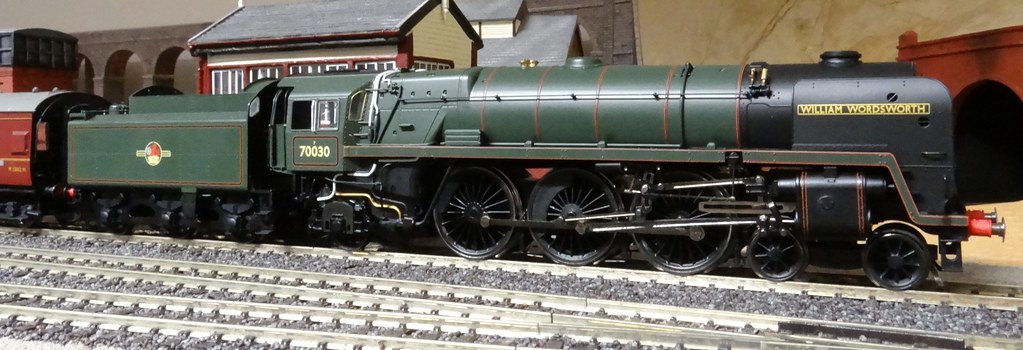
The donor – Hornby William Wordsworth R2563
Firstly a view of the model that was to provide the tender with the Late Crest. At the time of writing my last post there were issues with William Wordsworth. I would give it a new identity with a tender with an early emblem and at a suitable time I would sell it.
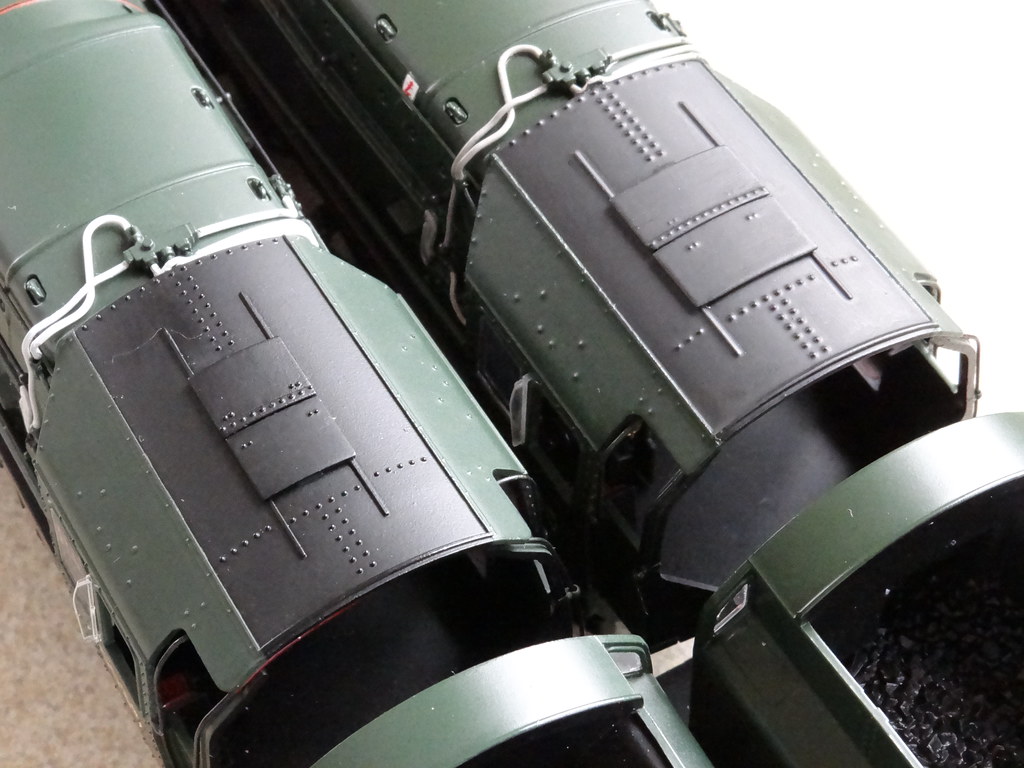
After recovering the white roof, R2563 Left R3094 Right
Perhaps I should have attempted to strip the white paint off the roof of Britannia R3094? My first attempts at repainting were not altogether successful. As the paint dried the rivet detail began to appear through the new paint as a pattern of white dots. I would start again. This time I over coated the whole of the white roof area with Humbrol matt black paint. When this had dried the central area was given a second coat of matt black and the sides above the windows were coated with Humbrol GWR green. Now nearly three weeks later it is still looking nearly very good.
I hadn’t compared Britannia (R3094) with any other models but placing it next to William Wordsworth (R2563) highlighted a difference in the size of the sliding hatches on the roof. I have searched the web for pictures of cab roofs without success. Which one is correct? Are they both correct? Did British Railways change the design of the cab roofs on the later engines?
In my previous Post I published a picture by Nigel kendall of the front of 70000 Britannia. Nigel has suggested that railway modellers might also be interested in another of his pictures, showing the cab – but not unfortunately the cab roof!
Where is all this leading? My researching into the history of various ‘Britannias’ is suggesting that where engines received new smoke deflectors to replace the ‘dangerous deflectors’ (with the handrails) the deflectors were changed after or at the same time as the tender received a Late Crest. William Wordsworth has replacement smoke deflectors and as such should only be paired with a tender with Late Crest. I would keep it that way.
What about 70000 Britannia? Returning to Derek Dean’s notes Britannia is recorded as gaining a Late Crest in 1958, new deflectors in 1959 and a speedometer in 1960. The Hornby model R3094 (with or without white roof) is thus either representative of the engine in preservation – when it should additionally be fitted with an air compressor inside the one of the smoke deflectors – or in pre 1958 days when it would not have had a speedometer or overhead warning plates.. As to my 1960s layout – I shall bide my time and enjoy the model for how it might have been!
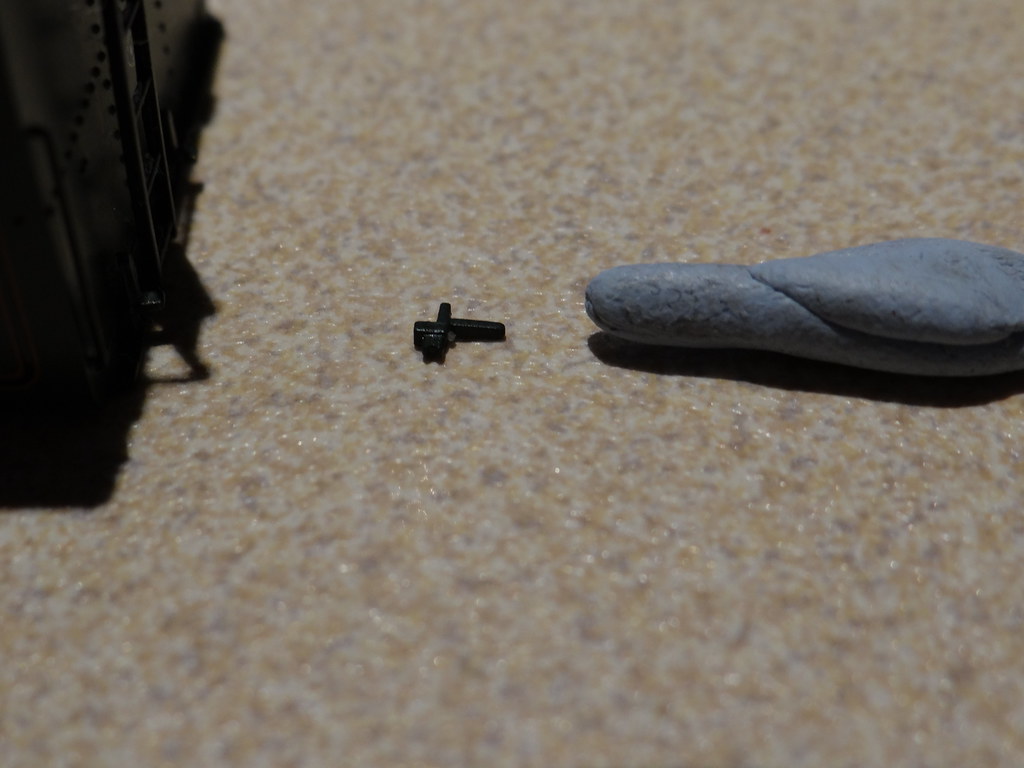
Compensating for old age
If I was keeping William Wordsworth there were several jobs to attend to. A number of bits had dropped off. How best to reattach these small parts? I would use Blu-Tack to help me hold the smaller items whilst I introduced a drop of Butanone from a tiny paint brush to make the joint.

Attaching a lamp iron
There was a more fundamental problem with William Wordsworth – it didn’t run smoothly. It had a stiff point - I deduced it had a cracked drive gear.
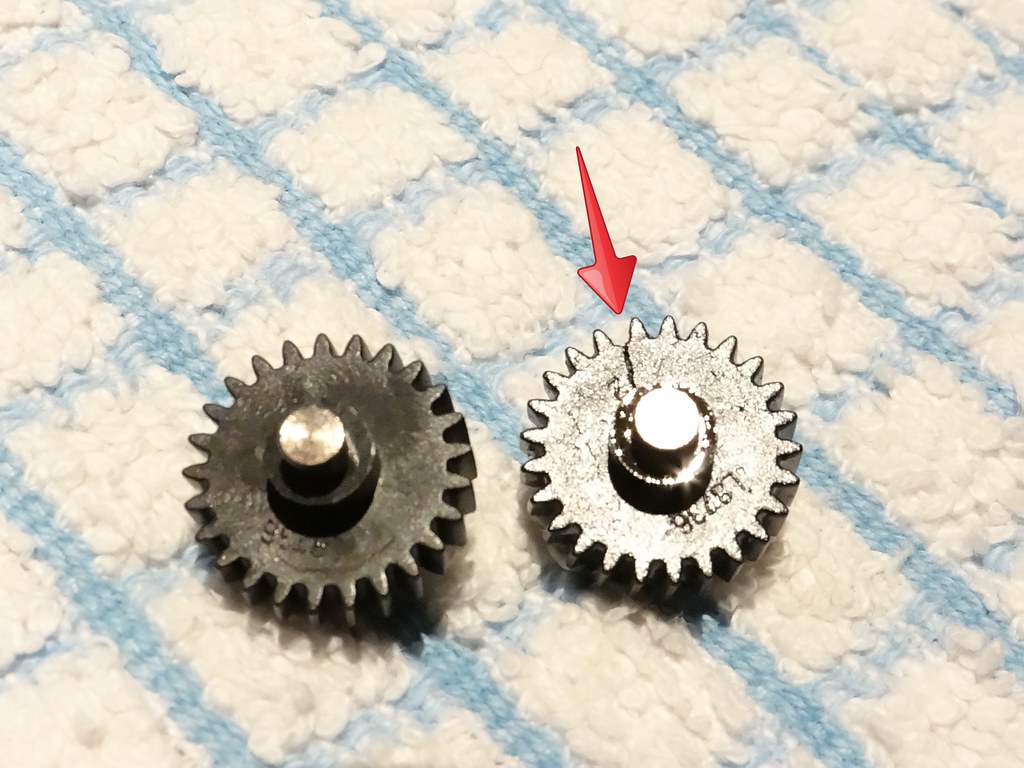
Replacement gear left, cracked gear right
Why a cracked drive gear and not just faulty quartering? Observing the movement of the engine showed that the stiffness did not occur at the same point for each revolution of the driving wheels but corresponded to something like one and quarter revolutions – so obviously there was something wrong in the engine’s drive train not directly connected with the wheels.
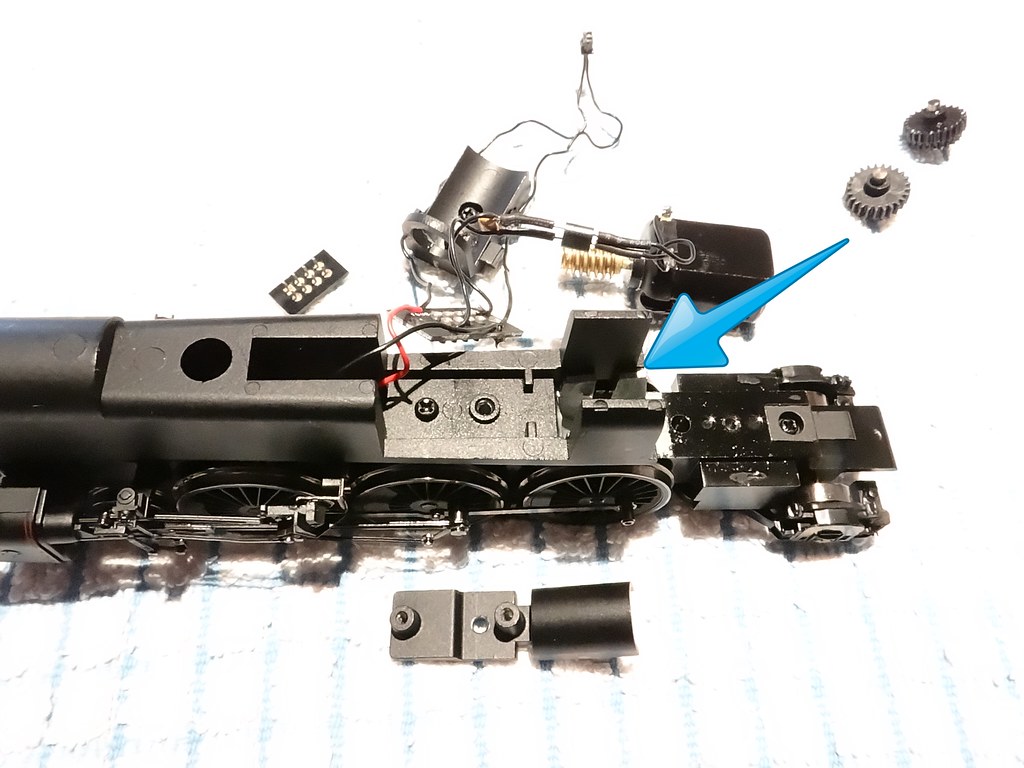
Hornby Britannia Chassis – deconstructed
As shown above, the drive gear is buried deep within the Hornby chassis. Luckily Hornby have used screws to hold everything together. It is a straightforward task to tunnel down into the chassis and to replace the gear wheel. Ideally the motor should be lifted clear. This is helped by carefully peeling the wires off the metal chassis where they are attached with black rubbery glue. If this is done carefully the wires can be reattached on completion using the original glue.

Hornby William Wordsworth R2563 and Britannia ex R3094 with repainted roof
Finally a view of renovated William Wordsworth and Britannia as might have been in the early 1960s if it had not had its ‘dangerous deflectors’ replaced.
-
 6
6


.thumb.jpg.60c53fcbcaa34017b05b8919d1a9e6d2.jpg)

15 Comments
Recommended Comments
Create an account or sign in to comment
You need to be a member in order to leave a comment
Create an account
Sign up for a new account in our community. It's easy!
Register a new accountSign in
Already have an account? Sign in here.
Sign In Now